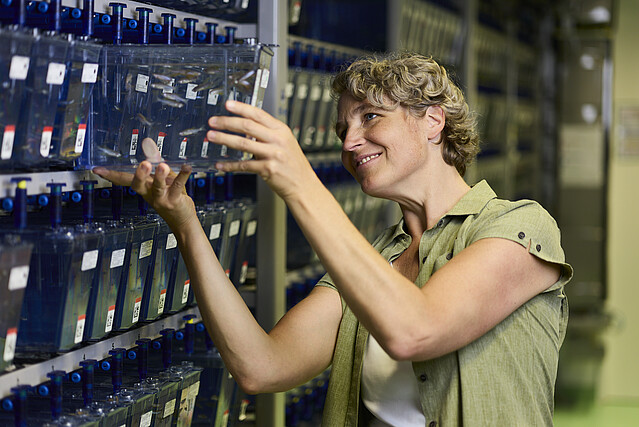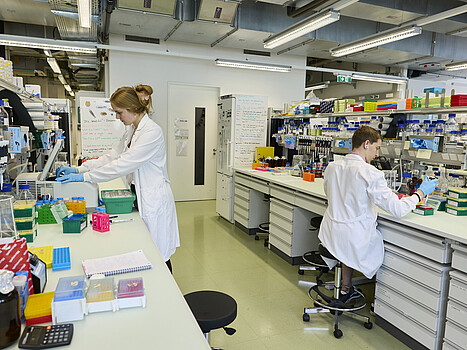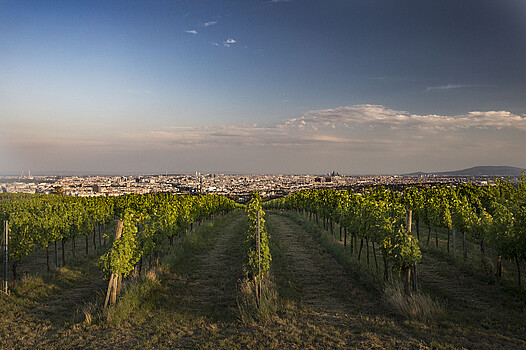Let's meet Andrea Pauli, developmental biologist
October 13, 2025|TA
Since choosing to do her PhD at the Institute for Molecular Pathology in Vienna, Dr. Andrea Pauli has never looked back.
Watch: German researcher Dr. Andrea Pauli explains why Vienna was the perfect choice for her groundbreaking research into fertilisation and the beginning of life.
Video by Vienna Business Agency, Melchers Media
The mystery of life
We all learned it at school: a sperm and an egg fuse to trigger the process of fertilisation, which creates a single cell, which in turn develops into an embryo and, eventually, a fully formed organism. We take for granted that this is how every one of us got here, and yet, says Andrea Pauli, we understand surprisingly little about how this fundamental transition from egg to embryo is regulated.
Andrea's lab at the IMP at the Vienna BioCenter researches two aspects of this transition as it functions in vertebrates. Firstly, the remarkably little-known basic mechanism of how sperm and egg recognize, bind to, and fuse with one another to form a new organism. Secondly, the molecular processes that allow the egg to remain dormant before fertilization and then switch to the developmental program required for embryogenesis (the formation and development of an embryo).
Enter the zebrafish. The processes Andi studies are broadly conserved across vertebrates, and zebrafish are an important model system for developmental biology, as similar principles govern fertilisation and egg dormancy in species from humans to fish. Andrea, or Andi, as she is known to all, has 1,200 tanks with capacity to hold 18,000 fish in her impressive facilities at the IMP. This allows her to study the processes in detail using zebrafish to gain insights that are directly relevant to human biology.
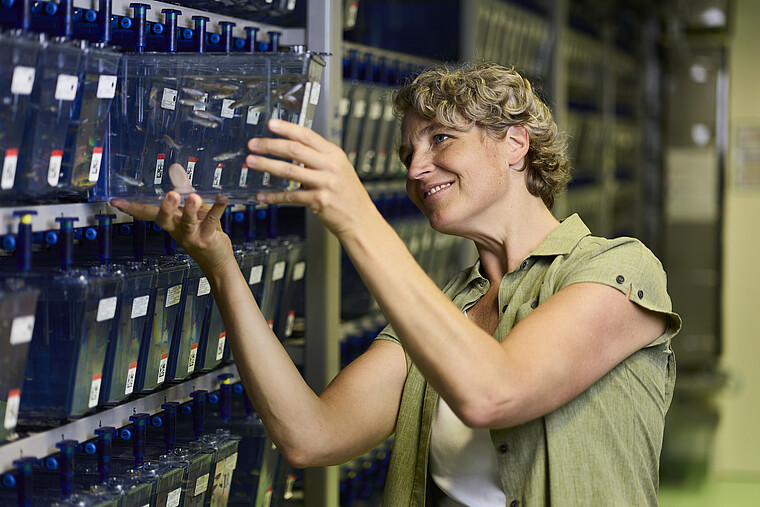
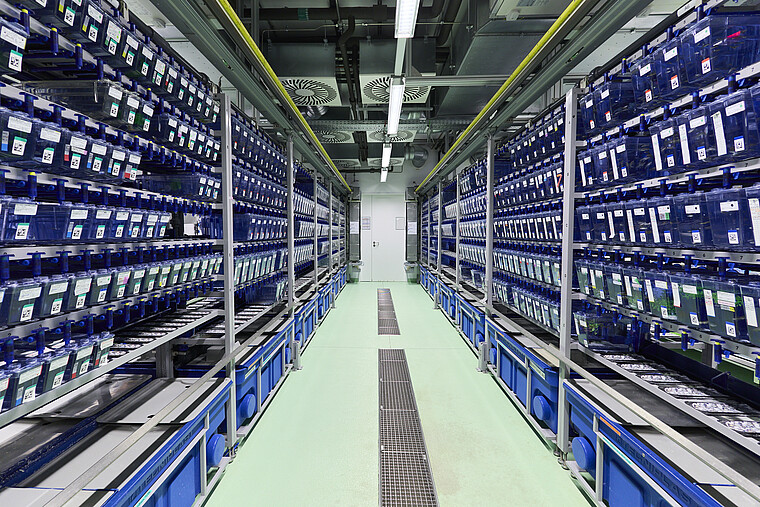
Breakthrough protein discovery
Genetic research has uncovered numerous proteins involved in the initial interaction between sperm and egg. However, there was still no clear proof of how these proteins connect or work together. Until last year, that is. Andi and her team made a breakthrough discovery: using the latest advancements of the AI tool AlphaFold, they identified a new protein complex that facilitates the first molecular connection between sperm and egg and demonstrated its function in living organisms. The scientists validated the AI predictions through experiments in living organisms – from the zebrafish to mice, as well as human cells. The findings reveal that a fundamental “lock-and-key” mechanism crucial for fertilization is shared across vertebrates.
“The identification of this complex of three proteins is a major step forward… The fact that it was maintained over millions of years of evolution shows just how important this lock-and-key process is," said Andi on her discovery, which she led alongside postdoc Victoria Deneke and Vienna BioCenter PhD Program student Andreas Blaha.
What societal implications does Andi's research have? Obviously, for reproduction. Her and her team's findings could improve diagnosis and treatment of infertility. Her discovery of of a sperm fertilisation complex opens the possibility to non-hormonal male contraceptives, which could promote reproductive equity, especially in low-income regions with limited access to contraception. Beyond human health, improving reproductive efficiency in livestock could reduce costs and support global food security. In conservation efforts, her research could increase success rates for in vitro fertilisation and embryo viability in endangered species.
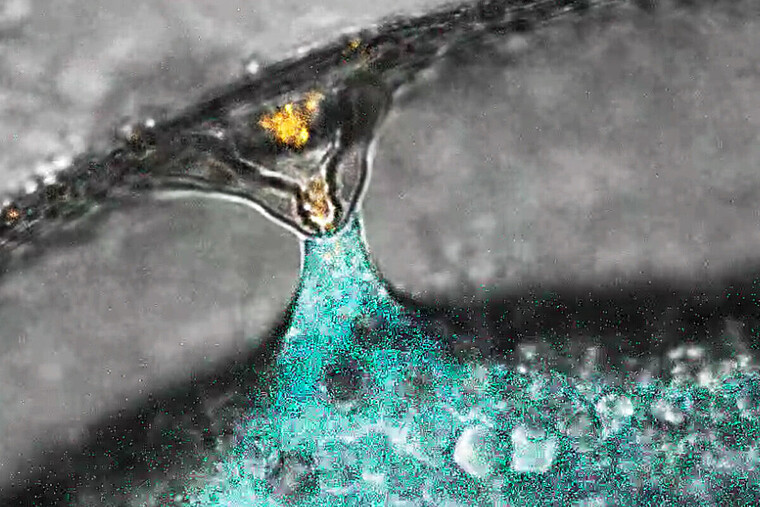
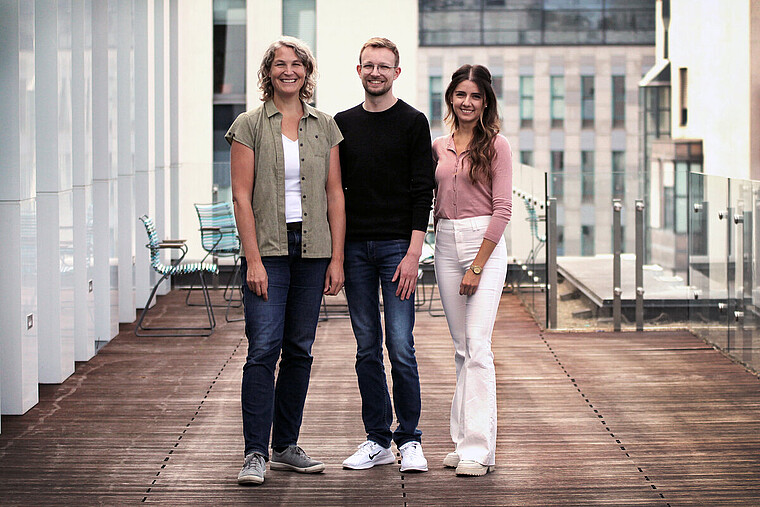
The road to Vienna
When Andi applied to an international PhD programme at the IMP in Vienna 20 years ago, she probably didn't imagine that she'd be back here for good just a few years later. From Oxford to Harvard, in those interim years she couldn't help but compare each place she did science in to the IMP - there was just something about this “highly collaborative, stimulating institute where top‑quality research happens in a dynamic environment”. So, naturally, when the time came to launch her own lab, the IMP and Vienna BioCenter were hot contenders. She loved the idea of having the freedom to pursue her research interests, and was immediately drawn to the campus’s collaborative, fast‑paced culture. While she admits that choosing between leading instiutions in the USA and the IMP here in Vienna wasn't easy, she's never regretted her choice.
And, ever keen to snap up the best talent in the world, the IMP was happy to have Andi back among their ranks. Her initial appointment was for eight years; three years ago, she was promoted to a tenured senior position, allowing her to continue curiosity‑driven, basic research in an environment where the only limits are your own ideas.
“While this is a real luxury situation to be in, the maybe only downside is that it leaves very little room for excuses!” Andi jokes.
A collaborative research community
One of the key strengths of Vienna's science and research community is its cooperative spirit. Andi's delight at being part of a community-driven, stimulating environment is echoed by all researchers from across many fields of science. The Vienna BioCenter campus boasts a particularly impressive collection of institutes and labs - not only the IMP, but also IMBA (Institute of Molecular Biotechnology), GMI (Gregor Mendel Institute of Molecular Plant Biology), the Max Perutz Labs, and the neighbouring Faculty of Life Sciences of the University of Vienna, to name but a few.
“Compared to other places I have been, what also stands out in this respect is the ‘free sharing’ attitude and openness between people,” Andi explains. “There is very little to no competition amongst different groups on campus, meaning we can all benefit from each other instead of competing with each other. This has been a key asset for us at the Vienna BioCenter in comparison to bigger 'hubs' like Boston or the Bay area.”
Creativity in the city
One pull factor for international life sciences students and talent, besides Vienna's affordable cost of living and exceptional quality of life, is its cultural scene. Being the cultural powerhouse it is, Vienna is a happy landing spot for the many scientists who take an interest in the arts - from playing instruments themselves to being avid readers or appreciators of art, Vienna has more than enough to offer each of them. Andi herself is an avid cello player, often performing in the prestigious Goldener Saal of the Musikverein with the Austrian Academic Philharmonics Orchestra (WAPH).
“Creativity is something that unites artists and scientists – we scientists often say we ‘stayed kids’ in our mind and love to discover new things – very much with the mindset of a little child that loves to discover the world step by step. Vienna offers a very fruitful ground to be inspired by your surroundings,” Andi says. She praises Vienna for being a city of many contrasts, coexisting in harmony to give the city a very special flair.
Funding, support, and talent
Andi's experiences speak to the strengths of Vienna's life science ecosystem. She has received several generous institutional funds and prizes, such as from Boehringer Ingelheim, the Austrian Science Fund, and a Consolidator Grant from the European Research Council, to name a few. Her PhD students and postdocs were also able to receive competitive grants, meaning they had freedom to work on what they wanted and follow new directions in their research.
Fantastic instiutional support makes her life easier - from grant offices and purchasing departments to conference support and campus-wide lecture series. A feeling of interconnectedness across the the Vienna BioCenter campus is carefully fostered, and an international PhD programme makes it easy to recruit international students from across the globe to bring new insights and fresh talent to the labs.
It's this establishment of top-quality research instiutions with core funding as well as good partnerships with Viennese universities which has put Vienna on the map as a hub for life sciences in Europe, and the world.
Andrea Pauli studied biochemistry in Regensburg, Germany, and molecular and cellular biology at the Ruprecht-Karls University of Heidelberg in Germany. For her PhD, Andi joined the labs of Kim Nasmyth and Barry Dickson as a joint PhD student at the IMP in Vienna to uncover post-mitotic functions for cohesin in Drosophila. In 2006, she moved with Kim’s lab to Oxford, UK where she obtained her D.Phil. For her post-doctoral studies, Andi joined Alex Schier’s lab at Harvard University, USA. Since 2015, Andi has had her own lab at the IMP, first as a junior group leader and since 2022 as a senior group leader. Andi’s lab has been funded by the ERC, the FWF START Prize and a FWF-funded SFB RNADeco, the HFSP organization, the EMBO Young Investigator Programme (EMBO YIP), and a Whitman Center Fellowship from the Marine Biological Labs in addition to core funding from the IMP and Boehringer Ingelheim.
